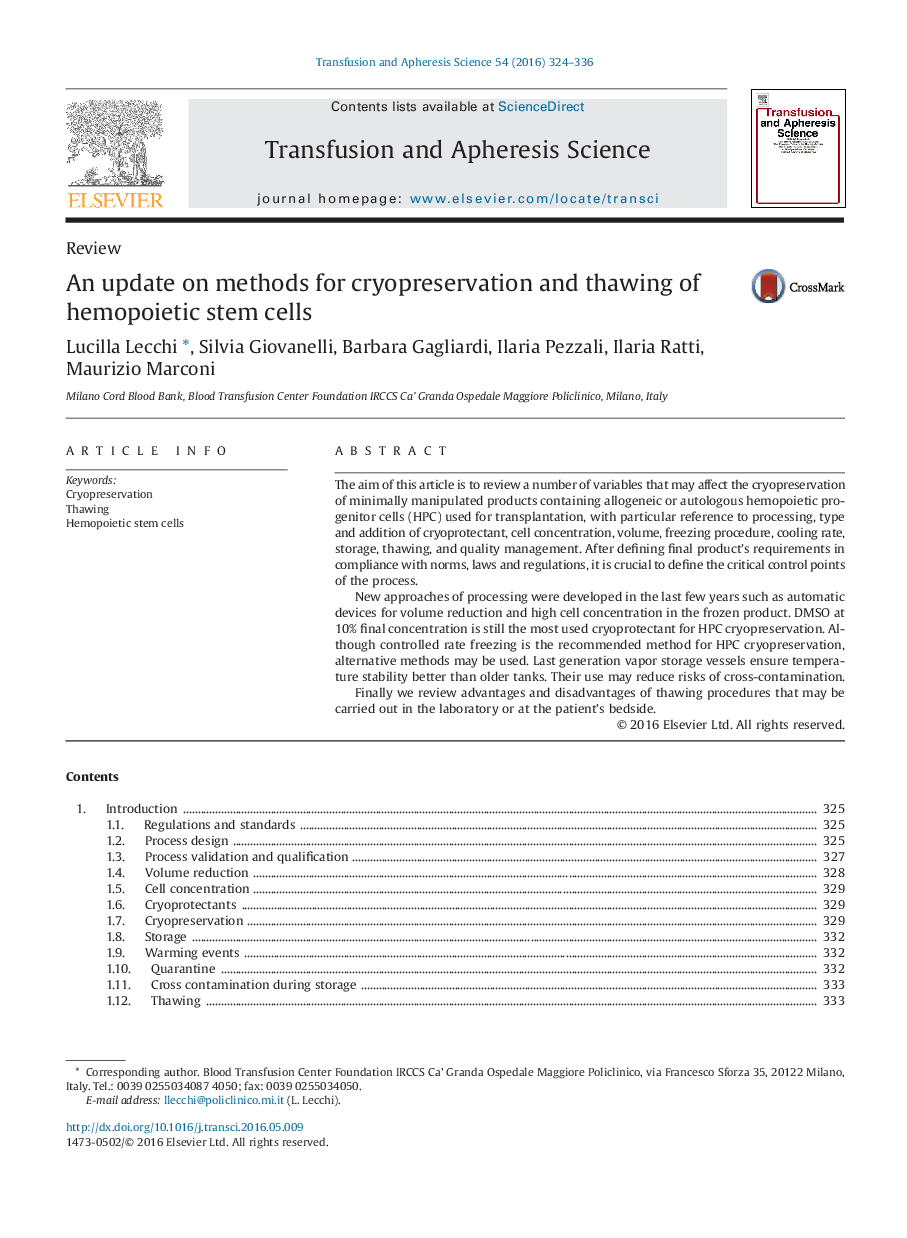| Article ID | Journal | Published Year | Pages | File Type |
|---|---|---|---|---|
| 3334834 | Transfusion and Apheresis Science | 2016 | 13 Pages |
The aim of this article is to review a number of variables that may affect the cryopreservation of minimally manipulated products containing allogeneic or autologous hemopoietic progenitor cells (HPC) used for transplantation, with particular reference to processing, type and addition of cryoprotectant, cell concentration, volume, freezing procedure, cooling rate, storage, thawing, and quality management. After defining final product's requirements in compliance with norms, laws and regulations, it is crucial to define the critical control points of the process.New approaches of processing were developed in the last few years such as automatic devices for volume reduction and high cell concentration in the frozen product. DMSO at 10% final concentration is still the most used cryoprotectant for HPC cryopreservation. Although controlled rate freezing is the recommended method for HPC cryopreservation, alternative methods may be used. Last generation vapor storage vessels ensure temperature stability better than older tanks. Their use may reduce risks of cross-contamination.Finally we review advantages and disadvantages of thawing procedures that may be carried out in the laboratory or at the patient's bedside.
